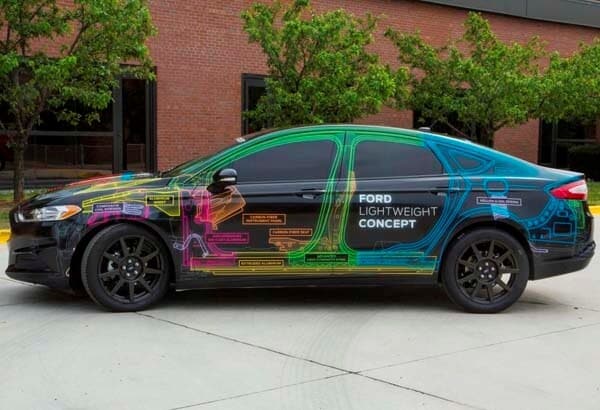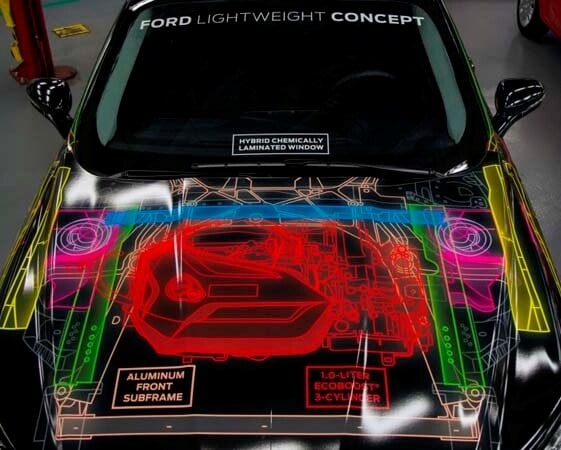Embodying a holistic approach to trimming curb weight without compromising functionality or safety, the Ford Lightweight Concept expands on the mass-minimizing research the automaker used to trim some 700 pounds off of the all-new 2015 F-150 pickup. This case study in what Ford calls "light-weighting" mixes design refinements with a variety of advanced materials to yield a vehicle – in this case, a 2013 Fusion – that weighs nearly 25 percent less than its production counterpart. That dramatic transformation also results in better fuel economy and lower CO2 emissions, both increasingly critical in the years ahead.
Also: The Class of 2015 — New Vehicles Ready to Roll
Developed in concert with the U.S. Department of Energy’s Vehicle Technologies Program and Cosma International – a subsidiary of auto supplier Magna — the Ford Lightweight Concept features the most comprehensive integration to date of materials ranging from aluminum and high-strength steels to magnesium and carbon fiber. While much of it will need significant development before getting the nod for actual production, Raj Nair, Ford group vice president, Global Product Development noted: "A focus on light-weighting will be fundamental to our industry for years to come, and we are investigating many advanced materials applications as possible solutions for weight reduction in our vehicles."
Beyond its Magna-designed body-in-white that incorporates a variety of different steel and aluminum elements to shed about 168 pounds from its structure, the Ford Lightweight Concept also features a hybrid chemically laminated windshield and a carbon fiber composite dash along with chopped carbon/nylon composite seat frames. Carbon fiber also is used for the oil pan and front cover on the car’s 1.0-liter EcoBoost 3-cylinder engine as well as for the front coil springs and the wheels that are wrapped in special lightweight tires. Other touches include a transmission case made from magnesium instead of aluminum and hollow rather than solid steel rear coil springs.
Also: Mainstream MPG — 10 Most Fuel-Efficient Sedans
"Our goal was to investigate how to design and build a mixed-materials, lightweight vehicle that could potentially be produced in high volume, while providing the same level of safety, durability and toughness as our vehicles on the road today," said Matt Zaluzec, Ford technical leader, Global Materials and Manufacturing Research. "There’s not a one-size-fits-all approach to light-weighting. The Lightweight Concept gives us the platform to continue to explore the right mix of materials and applications for future vehicles."
More Advanced Technology…
Cadillac’s Super Cruise technology has now begun real-world testing
Mercedes-Benz has introduced a new anti-wrong-way-driver warning system
2014 Volvos offer a new cyclist-detection safety system
Popular at KBB.com
10 Best Sedans Under $25,000
12 Compact Cars for 2014
10 Best Luxury Cars Under $40,000













